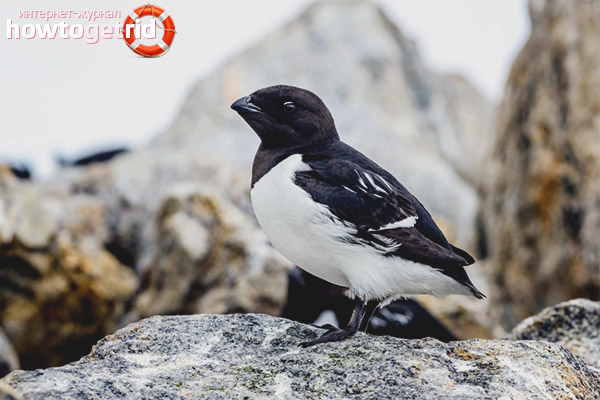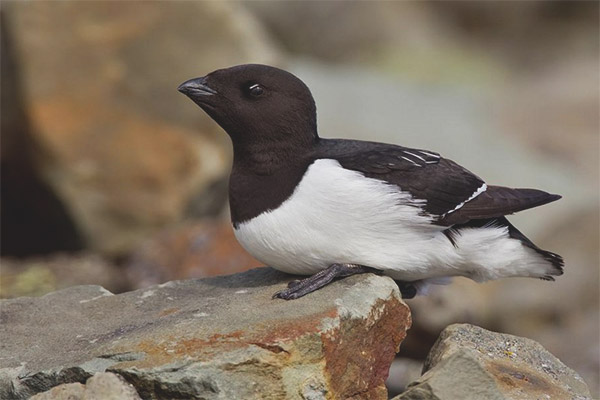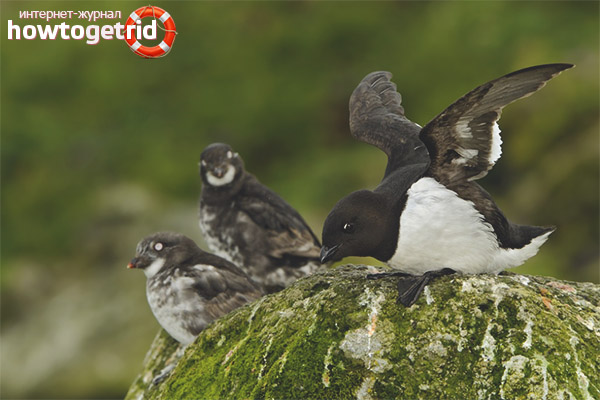The content of the article
Lyurik is a bird belonging to the order of charadriiformes, it is ranked as a family of allons. It is a seabird that resembles a thrush in its size. This individual is considered the smallest member of its family. The body length of an adult bird can reach 20 centimeters, and the width of its wings reaches 48 centimeters.
Lurik flies quickly enough, very often you can see flying close to the surface of the water, intensively working with its wings. Representatives of this species of birds swim excellently and perfectly dive, and are also able to stay under water for a long time. On land, they look quite awkward.
General information
The color of the males does not have any differences from the color of the females. These birds have a short black beak, their cornea has a brown color, and their legs are gray in color, only the membranes between the fingers, along with the claws, have a black color.In the summer, adults have black plumage of the back, as well as wings.
On the head of this bird, its throat, and also on the front of the neck, the plumage of a dark brown color is located. Lurik's chest, its belly, the areas located in the under-tail and fragments of the sides have a white color. On the upper part of the flight feathering, which is of secondary importance, there passes a strip painted white.
When birds of this species acquire their winter plumage, adult individuals become covered with white plumage with characteristic motley patches in the area located from the beak to the goiter of the bird. Not rarely does a white spot, located in the region of the eye, increase, reaching the occipital region - it seems that a white mask is worn on the head of the bird.
The nature of the coloring of young individuals resembles the colors of the plumage of adults in the mating season, with the only difference being that all black colors are replaced by brown ones. This even applies to the beak. In the throat of young individuals, prominent mottles are highlighted, colored in light color.
Habitats
Lurik likes to build his nesting sites in the Arctic latitudes, in the Russian Federation he can be found in the north of the European part - birds chose areas of Novaya Zemlya, as well as Franz Joseph Land. During periods of seasonal migrations of these birds can be found in the southern part of the Barents Sea, where they gather in large flocks.
For wintering, the Lurik flies to the northern part of the Atlantic Ocean, and there the birds settle at the very edge of the ice, settling in the extensive wormwood that occurs in this region. Sometimes the local climatic conditions are accompanied by fierce autumn storms, forcing migratory birds to extend their migrations to more southern latitudes. There were cases when they had to reach the limits of the North Sea.
There are also cases when these birds were met in the northern part of the Baltic states, Chuvshii and even in the Moscow region.They are very poorly tolerated by oil pollution (sections of the coastline or surface of the water).
The period of breeding offspring
This type of bird prefers monogamous relationships. During the nesting period, they gather in large colonies, electing mountain ranges of the coastal zone. These birds make their nests in various cracks and small fractures of a rocky surface, and the voids formed between the stones may well be suitable for this purpose.
In the laying of the female Lurik, as a rule, there is one egg, it is painted in a greenish-blue tint, it is covered with rare dots, as well as mottled. Both parents alternate in incubation of offspring, the incubation period of these birds is 30 days. Nestlings are born covered with downy coat, which has a dark brown shade on top, and to the bottom acquires pale tones. The chick gains the ability to fly on the 29th day of his life, and at this time he always leaves the nest.
Diet

Lyurik, like most ants, hunts on water. The main ration of these birds consists of various crustaceans, however small fish is sometimes added to the number of their prey. For hunting these birds have to gather in large flocks.
The dangers that await the birds of this species
For Lurik, environmental pollution poses the greatest threat; it happens that these birds are massively killed in accidents involving oil spills.
Scientists explain this state of affairs by global warming. The fact is that one of the largest crustacean species that is included in the diet of northern birds is able to live exclusively in cold water, which usually occurs among the belt of sea ice. And in the warmer waters dwells his miniature congener, who is not able to fully feed the birds that hunt him.
Disruption of the planet's ecosystem associated with global warming, leads to the gradual displacement of larger crustaceans by their small relatives, which leads to a reduction in the Lurik population.
Birds of this species are not devoid of natural enemies, one of the most dangerous for them is the northern gull. On the shore, the scribe poses the greatest threat.












To send